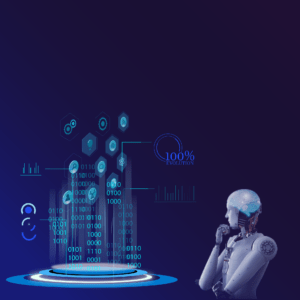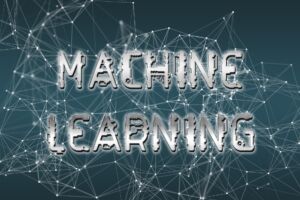
In my past blogs, I have shared information on artificial intelligence, the Internet of Things, and Digital Marketing, today we shall see all about machine learning and its types. This topic has been trending for a long and it is evolving rapidly.
What is machine learning?
Machine learning simply means to feed data to the system without any program or algorithm, the machine will itself learn by examples and experience. Machine learning is an application of artificial intelligence.
The process of learning involves, observation of data, patterns, and examples, that can help the machine take future decisions without any human intervention.
Common examples of machine learning

- Show recommendations on Netflix and similar apps
You may often see on your homepage several new show recommendations, do you think it is just randomly appearing? No, the Machine learning of Netflix will curate its data and suggest the shows by studying the streaming history and habits of users.
- Product recommendation on eCommerce websites
While shopping online, we often get recommendations like – ‘product similar to ‘, or ‘the people who bought this also bought’ etc, these recommendations are also given because of machine learning.
- Twitter posts
Twitter has tremendous numbers of tweets every second. But did you notice, every person will see different tweets on their feed? This is because Twitter uses machine learning and shows each individual the tweets which are most relevant to them, as per their use and engagement with popular accounts.
- Targeted email marketing
Companies have opted for machine learning and artificial intelligence, to tap the specific customer base, who is more likely to be interested in their services or products.
- Least traffic routes by Google maps
Google maps use machine learning to suggest you the route with the least traffic. They use the data like your location, average traveling speed, day and time of the location and then as per the machine learning conclusions, gives you the appropriate suggestions.
Types of machine learning

There are three types of machine learning – Supervised learning, unsupervised learning, and reinforcement.
Supervised learning
As the name suggests, this involves learning under a supervisor. This involves teaching the machine with well-labeled data. The data is fed in the system and then see if it can identify the data using the data feed to it (past experience). Successfully building an accurate supervised learning machine takes lots of time and expertise.
Supervised learning is classified into two categories of algorithms:
Classification: A classification problem is when the output variable is a category, such as “pink” or “blue” or “profit” and “no profit”.
Regression: A regression problem is when the output variable is a real value, such as “area” or “cost”
Application of supervised learning includes
- Text and face categorization
- Spam detection
- Weather forecast
- Stock and real estate cost predictions
Advantages of Supervised Learning
- Gives accurate results using the past experience
- Helps to optimize performance
- Helps to solve several real-world computation problems
Disadvantages of Supervised Learning
- Classifying Big data can be challenging
- Training supervised systems take lots of computation time
- Training data must contain a good set of examples to get proper results
Challenges in Supervised machine learning
- If any irrelevant data is added then it will give inaccurate results
- Data preparation and feeding is tedious
- Incomplete values in training data will give errors in the result
Unsupervised learning
In Unsupervised learning, there is no algorithm, pre-assigned labels, or data for training the system. These machines will self-learn by finding natural patterns in the data. The data is identified by the machine either by clustering or by principal component analysis.
Clustering means categorizing the data based on similar features, while principal component analysis means identifying the most useful feature and discard the rest data
Applications of unsupervised learning
- Medical imaging
- Anomaly detection
- Data categorization in News sections
- Object recognition
Advantages of unsupervised learning
- Minimal workload to prepare training data
- Easy and fast to carry out
- Minimal chance of human errors
Disadvantages of unsupervised learning
- May need human intervention to understand the patterns
- May give unnecessary results
Challenges of unsupervised learning
- Basis of data clustering is hard to determine
- It May take long for training as per the data complexity
Reinforcement learning
Reinforcement Learning is a type of machine learning technique that allows the system to learn by trial and error. It learns from its own mistakes and then takes the necessary actions. This learning method takes decisions sequentially, meaning the output will depend on the current input and its next input will depend on what outcome was received previously. You can relate it better by taking the example of Chess. The way your move depends on the move of the opponent, the same way reinforcement learning machine works
Applications of Reinforcement Machine Learning
- Self-driving cars
- Industry automation
- Question answer processing
- Treatment options in the medical industry
- Inventory management
Advantages of Reinforcement Machine Learning
- Helps solve complex problems which may not be possible in the other two learning
- It is a go-to option for achieving long term results
- Able to get perfect results as its learning pattern is similar to humans.
Disadvantages of Reinforcement Machine Learning
- Although it can solve complex problems but may cause issues in simple problems
- Needs lots of data and computation time
- The system may it overloaded at times and give errors in results
Challenges of Reinforcement learning
- When the dynamics change rapidly, the system may not evolve at the same pace.
We saw all three learning types and their advantages, before you dive into the details of machine learning, it is necessary to understand the basics. The topics like machine learning and artificial intelligence are vast and it is rapidly evolving with each passing day. Let me know if you want to learn in-depth about this topic further.
